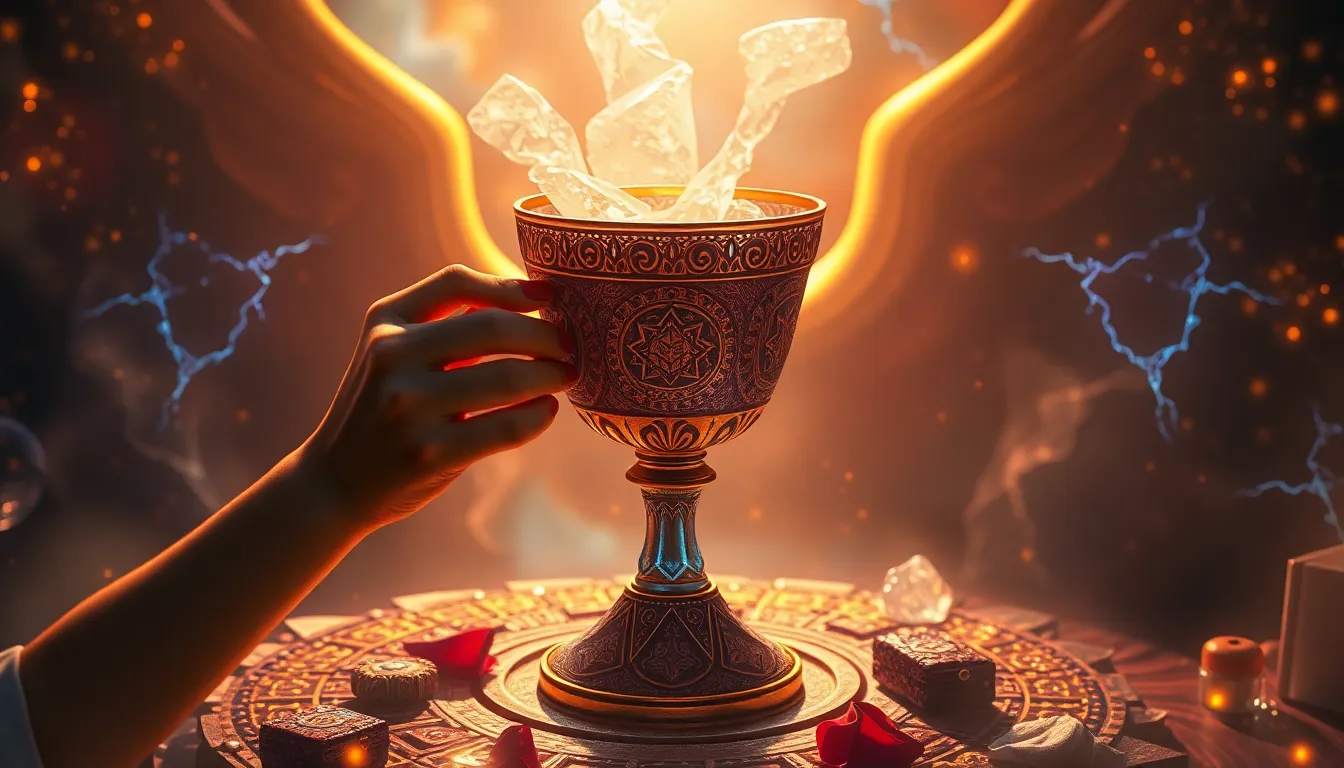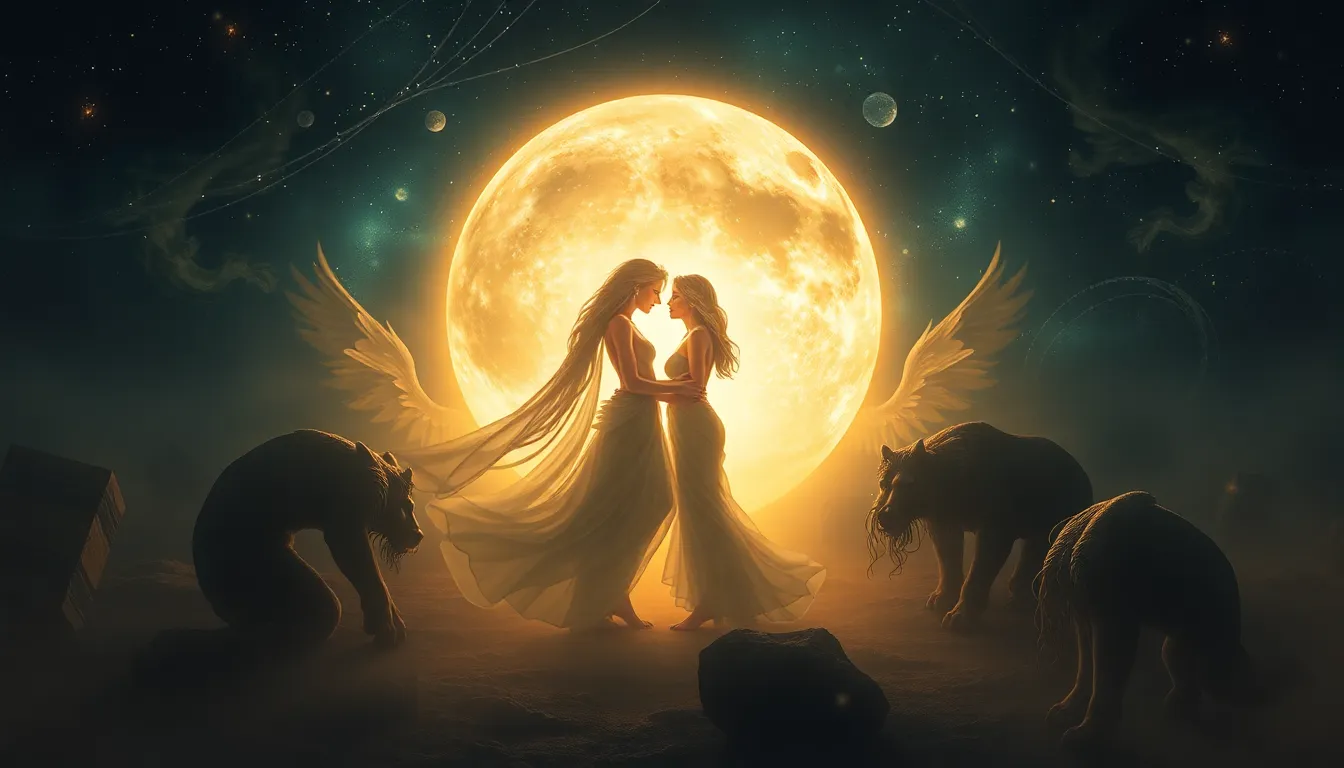Fenrir: A Study in the Nature of Fear and Dread
I. Introduction
Fenrir, a formidable wolf from Norse mythology, embodies the complex themes of fear and dread within mythological narratives. His story is intricately woven into the fabric of Norse cosmology, symbolizing the existential fears that accompany human existence. This article aims to explore Fenrir as a symbol of existential fear, examining how his narrative reflects broader themes of chaos, prophecy, and the unknown.
II. The Origins of Fenrir
Fenrir’s origins are steeped in prophecy and tragedy. Born to the trickster god Loki and the giantess Angerboda, Fenrir’s lineage sets the stage for his consequential role in Norse mythology.
- Background on Fenrir’s birth and lineage: Fenrir is one of three monstrous offspring of Loki, alongside Jormungandr, the Midgard Serpent, and Hel, the ruler of the underworld. His birth signifies the intertwining of gods and giants, a theme prevalent in Norse myths.
- The role of prophecy in shaping Fenrir’s fate: A prophecy foretold that Fenrir would bring about the death of Odin, the chief of the gods. This foreboding knowledge instills fear among the gods, leading to drastic measures to contain Fenrir.
- The cultural context of wolves in Norse mythology: In Norse culture, wolves symbolized both danger and power. They were revered and feared, embodying the wild, untamed aspects of nature.
III. Symbolism of Fenrir
Fenrir serves as a profound symbol within Norse mythology, representing various themes that resonate with the human experience.
- Fenrir as an embodiment of chaos and destruction: His very existence is a reminder of the chaos that lurks beneath the surface of order, embodying the destructive potential inherent in nature.
- The wolf as a representation of untamed nature: Wolves are often viewed as symbols of untamed primal instincts. Fenrir personifies this wildness, challenging the constraints imposed by civilization.
- Fear of the unknown: Fenrir’s transformation and growth: As Fenrir grows in size and strength, he becomes a metaphor for the fear of the unknown—the unpredictable forces we cannot control.
IV. The Role of Fear in Fenrir’s Story
The narrative surrounding Fenrir is saturated with the theme of fear, particularly the fear of prophecy and its implications.
- The fear of prophecy and its impact on the gods: The gods’ fear of Fenrir’s prophesied role leads them to attempt to bind him, showcasing how fear can drive individuals to take extreme actions.
- The actions taken to contain Fenrir and their implications: The gods create a series of chains to bind Fenrir, each stronger than the last, reflecting their desperation and the futility of trying to escape fate.
- Psychological aspects of fear: how fear shapes behavior and decisions: The gods’ fear not only leads them to drastic actions but also shapes their relationships with each other and the world around them.
V. Fenrir and the End of Days: Ragnarök
Fenrir’s ultimate fate is tied to Ragnarök, the cataclysmic event representing the end of the world in Norse mythology.
- Fenrir’s role in the events of Ragnarök: During Ragnarök, Fenrir breaks free from his bindings, fulfilling the prophecy of death and destruction. He confronts Odin, ultimately devouring him.
- The symbolism of the final battle: fear of fate and inevitability: Fenrir’s role in Ragnarök symbolizes the inevitability of fate and the fear that accompanies the realization that certain events are beyond control.
- The duality of destruction and rebirth in Fenrir’s story: While Fenrir represents destruction, his presence also signifies the potential for rebirth and renewal in the aftermath of chaos.
VI. Comparative Analysis: Fenrir and Other Mythological Beasts
Fenrir shares similarities with other fearsome creatures across various cultures, illustrating a common archetype in mythology.
- Similarities with other fearsome creatures across cultures: Like Fenrir, creatures such as Cerberus from Greek mythology and the Chimera embody chaos and the primal fears of humanity.
- The archetype of the monstrous figure in mythology: Monstrous figures often represent the darker aspects of existence, serving as cautionary tales about the consequences of ignoring the fears they embody.
- Lessons learned from these mythological comparisons: Analyzing these figures collectively reveals the universal themes of fear, chaos, and humanity’s struggle against its darker instincts.
VII. Modern Interpretations and Representations of Fenrir
In contemporary literature and media, Fenrir continues to captivate audiences, symbolizing fear in various forms.
- Fenrir in contemporary literature and media: Fenrir appears in various modern adaptations, including novels, films, and video games, often portrayed as a powerful antagonist.
- The enduring legacy of Fenrir as a symbol of fear: His narrative resonates with modern audiences, reflecting contemporary anxieties about chaos, destruction, and the unknown.
- Psychological and cultural implications in modern society: Fenrir’s story prompts reflections on how fear shapes our behaviors and societal structures, making it relevant in discussions about mental health and existential dread.
VIII. Conclusion
In summary, Fenrir represents the complex interplay between fear, prophecy, and chaos within Norse mythology. His story illustrates how fear can drive actions and decisions, often leading to tragic outcomes. Understanding Fenrir’s narrative offers profound insights into human psychology, particularly our relationship with fear and the unknown. Ultimately, Fenrir serves as a reminder of the enduring power of myth to illuminate our fears and the human experience, bridging the ancient and the modern in a timeless dialogue.



